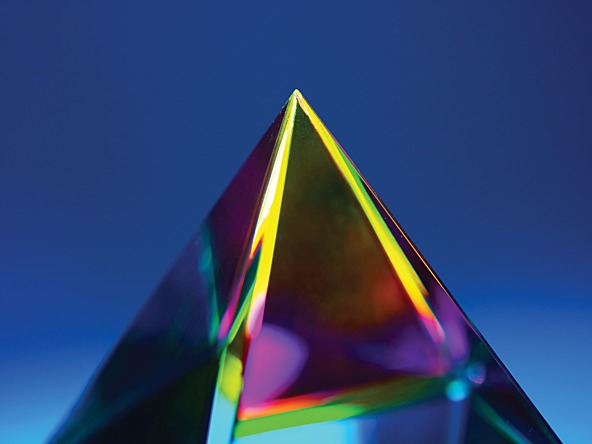FEATURE18 July 2016
A Bright Future
x Sponsored content on Research Live and in Impact magazine is editorially independent.
Find out more about advertising and sponsorship.
FEATURE18 July 2016
x Sponsored content on Research Live and in Impact magazine is editorially independent.
Find out more about advertising and sponsorship.
New technology is emerging that uses the properties of light and sound to transmit information. By Bronwen Morgan

Light and sound are two of the fundamentals of physics, and contribute to the vast majority of our sensorial experience. But could there be more to them than meets the eye, or indeed, ear? A number of innovations appear to harness the power of both mediums to transmit information, and this could have a significant impact on the world of research, and beyond.
Many hands make light work
LiFi – wireless technology that transmits high-speed data using visible light communication (VLC) – has recently been tested outside of the lab for the first time. Reports suggest that data transmission speeds of 1GB per second have been achieved; this is 100 times faster than current average WiFi speeds.
In simple terms, it works like an extremely advanced form of Morse code; just as switching a torch on and off in a certain pattern can relay a message, flicking an LED on and off at extremely high speeds – imperceptible to the naked eye – can be used to write and transmit information in binary code.
There are a number of benefits of using light, rather than radio waves. These include: a far higher capacity, as well as the ability to connect in places where WiFi can’t be used, such as aircraft cabins and hospitals. It is also more secure, as light cannot pass through walls.
The idea has reportedly been around in research labs for some time, but the limiting factor has been that LED manufacturers have so far been unable to make lights that were sufficiently accurate to pulse at the high speeds necessary.
A number of companies are now offering ‘plug-and-play’ applications for secure wireless internet access; one French company is reportedly in the process of installing LiFi technology in local hospitals. And, while LiFi is unlikely to replace WiFi in coming years, the two technologies could theoretically be used together to achieve better network security and efficiency.
Wired for sound
On another spectrum is an app called Chirp, which transmits data – or at least the ability to unlock data – via sound. The company’s founder, Patrick Bergel, describes it as a “sonic barcode”.
Chirp was originally intended to be used for picture sharing. “Pictures are the atomic unit of the social web,” claims Bergel, adding that “Facebook is just a photo-sharing site that got out of control”. But Chirp can now be used to transmit any kind of information on a one-to-many basis effectively.
The app creates a unique code that is translated into a “tune” – a “sweet and discreet” noise (according to Bergel) intended to sound similar to that of a bird’s chirp – of around two seconds long, which is broadcast from the phone’s speaker.
Any phone with the Chirp app that is within earshot of that transmission can then capture the sound, decode it, and download whatever it is from the internet that the “Chirper” wanted to send.
If there is no network available, then items can be pulled up from any data already stored locally on the device. So, if data is already on a device, Chirp is like a key able to unlock information, Bergel explains. This means there is effectively no limit to the amount of information that can be transmitted.
By design, Chirps are intended to go out to anyone ‘listening’, so information can only be kept secure by placing a password on whatever information the link is referencing. “[Security] is managed on the network side, not the audio side,” says Bergel. “But we are currently working on one-to-one Chirps.”
Some interesting use cases have developed organically from the idea, he says. For example, the app has been installed on 40,000 devices by Californian teachers, who are Chirping to their students. “It answers a pain point, especially among young people, that no-one likes typing on mobile devices,” Bergel says. Other uses have been at events such as London Fashion Week, where retailer Topshop broadcast Chirps from speakers hidden in trees to give the app’s users access to behind-the-scenes media content.
And while Bergel hasn’t explored the potential of using the app for research, he agrees that there is clear potential for Chirp to deliver links to surveys for location-specific insights.
There are other companies doing similar things, says Bergel, but they mostly use ultrasound to transmit information. He claims that this makes them unreliable, because mobile phones aren’t designed to produce sound at that frequency.
The only limit of his approach, he says, is that mobile phone speakers aren’t very loud. “But if you put a Chirp though a PA system, which we have, then everyone in a venue could receive it. I’ve Chirped from the stage of the Royal Albert Hall.”
0 Comments